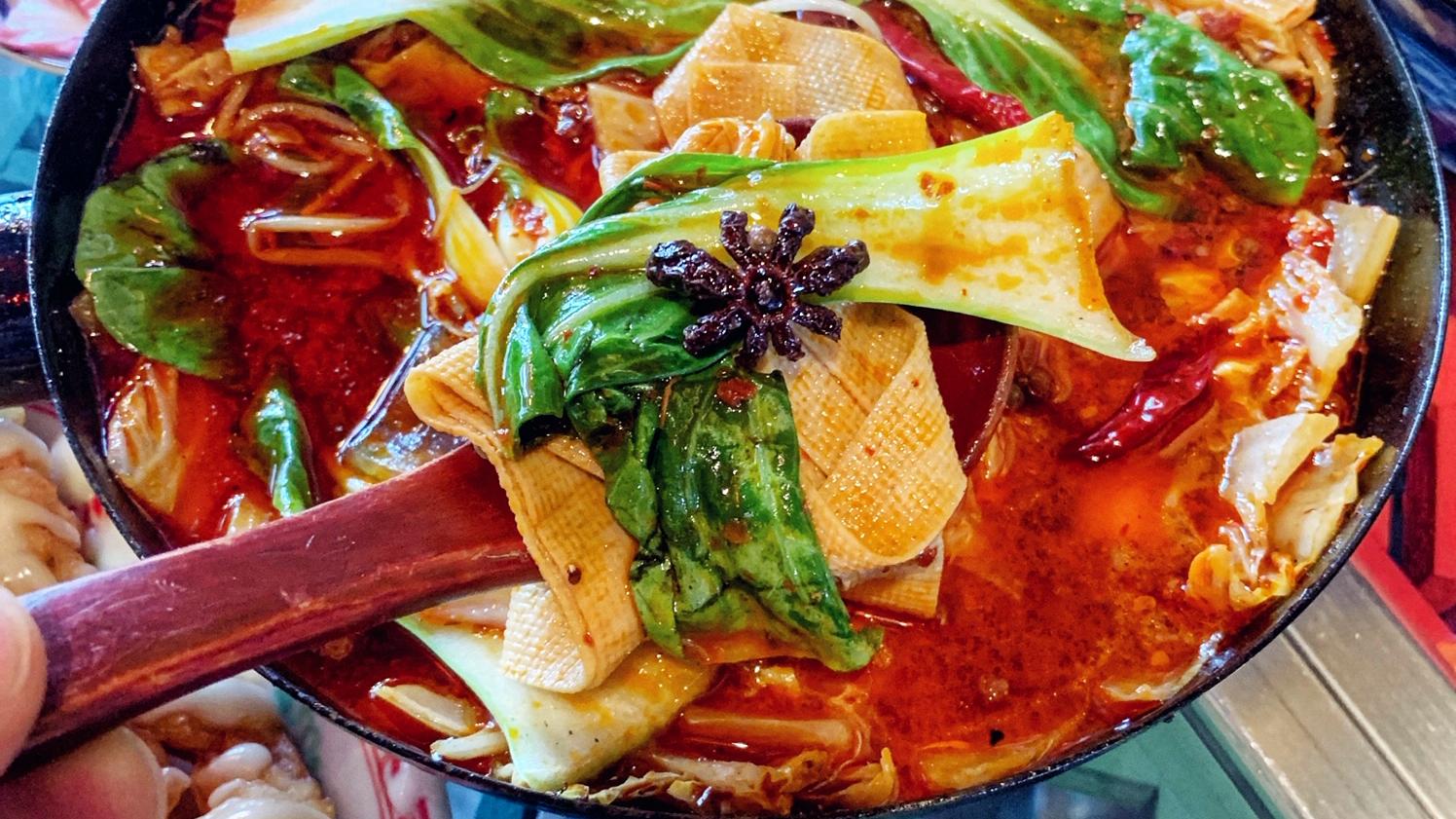China has a lot of great dishes to enjoy on cold days. You can enjoy spicy Chongqing hotpot, hot pots of dim sum, or sweet egg tarts… However, if you want to find a new dish with rich ingredients, malatang will be a dish worth experiencing.
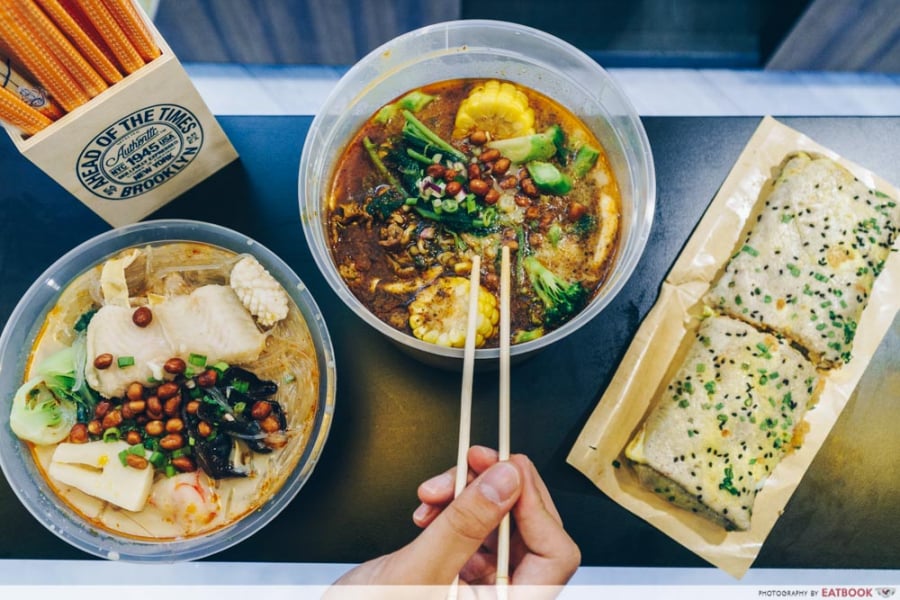
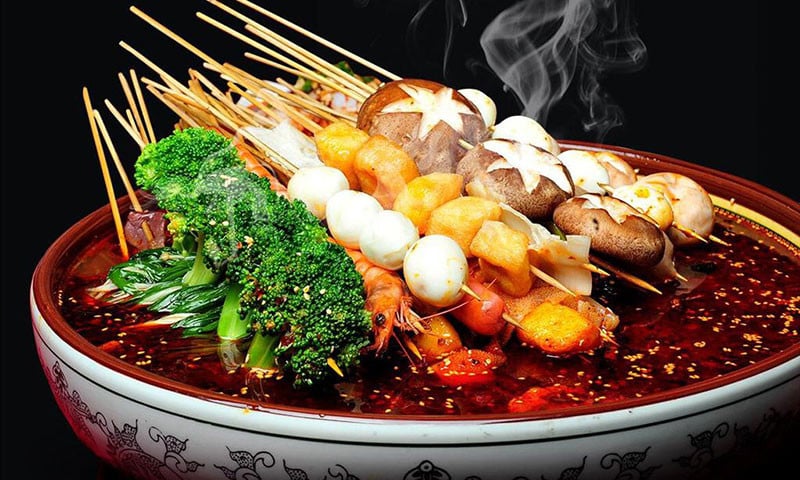
Malatang is a popular street food in China, you can find and enjoy it at any place in this country. Malatang originated from Sichuan province, its name in simplified Chinese is written as 麻辣烫; pinyin: málàtàng, meaning “numb and spicy hot”. This dish is named after its main ingredient, mala sauce, combined with lots of Sichuan peppercorns and chili powder. The word mala is made up of the Chinese characters numb (ma) and spicy (la) which refers to the hot and spicy feeling in the mouth after eating.
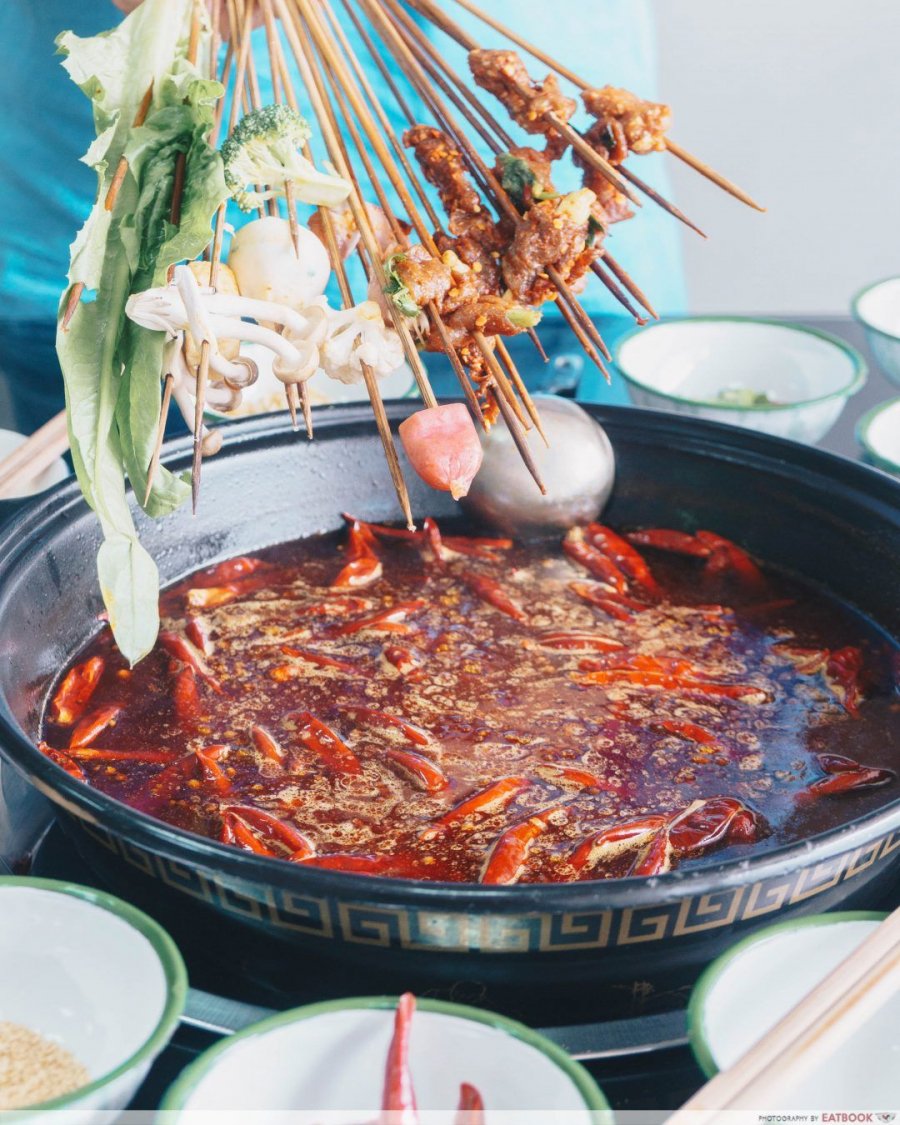
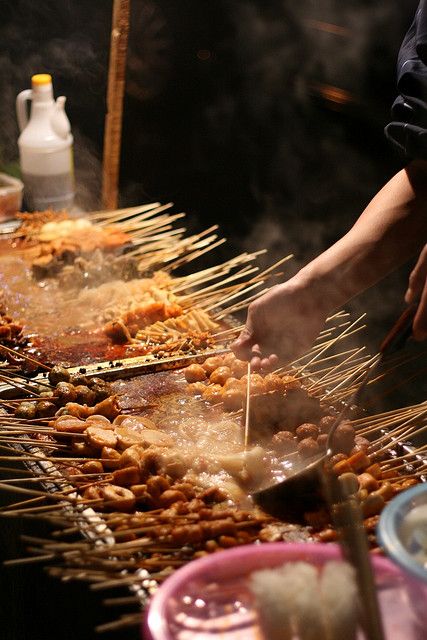
In ancient times, rowing boats was a popular profession in China, many people made a living by rowing and pulling boats. Working in the humid and foggy weather made them feel very tired and cold, so the boatmen and laborers created malatang to enjoy when they were hungry. They used the vegetables they had (bought or picked) to put in the soup pot, then added a lot of spices such as pepper, ginger, Sichuan chili... to dispel the cold. Because of the simplicity and convenience in cooking, this dish began to spread quickly. Many people living on the river banks and boats began to follow suit. They put the ingredients and broth on both ends of the shoulder pole and then carried it around to sell, shouting as they walked, gradually malatang became popular and appeared all over China.
The special thing about malatang is that the ingredients will be made into skewers. Meats and vegetables are sliced into thin slices, then skewered through bamboo skewers, making the dish look interesting and pleasing to the eye. The ingredients of malatang are very simple and popular, almost every hot pot ingredient is used in this dish. You can choose from pork, beef, chicken, lamb... to seafood such as fish, shrimp, squid... or your favorite vegetables to cook with the broth. Over time, the ingredients of malatang have become more and more diverse, many stores also serve meatballs, fish balls, sausages, dumplings...
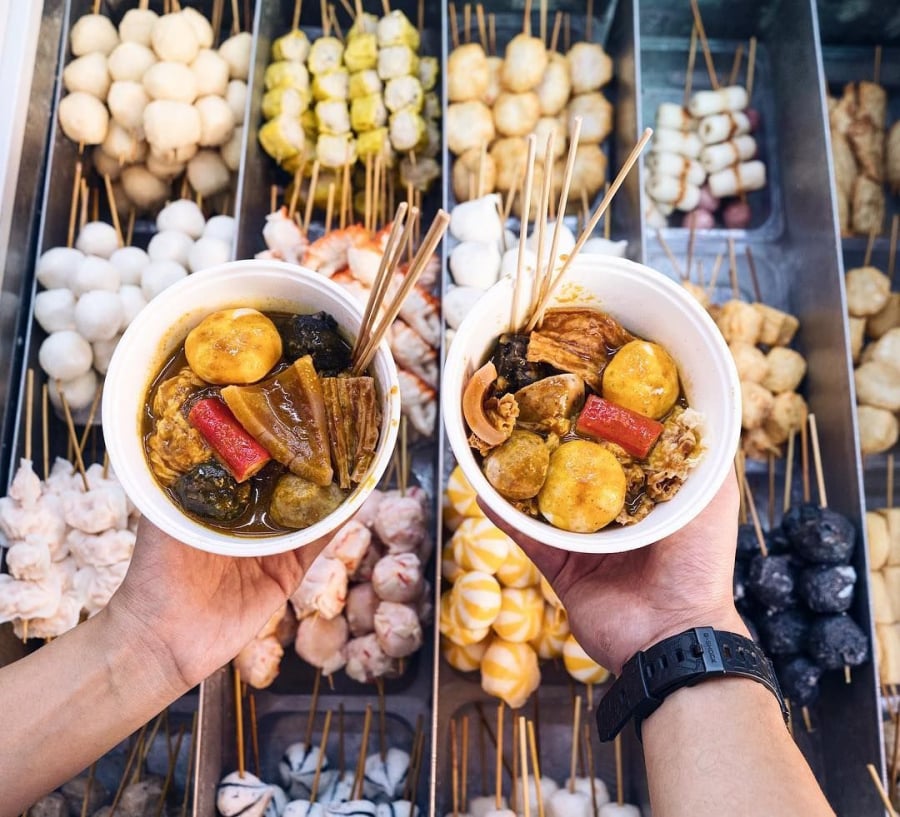
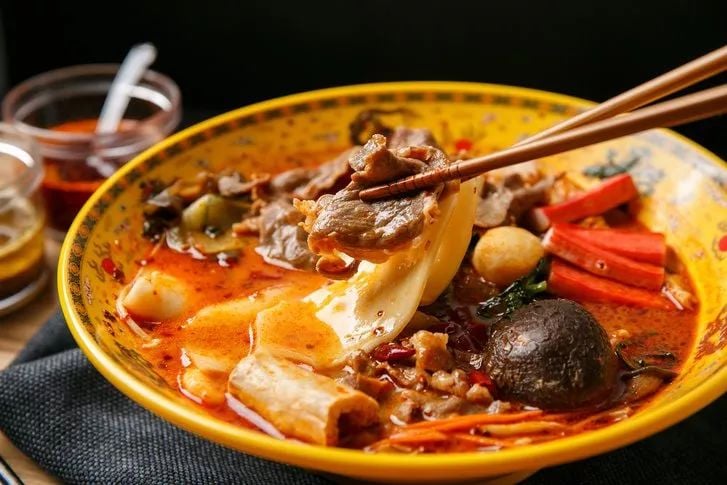
Vegetables for malatang are divided into two different categories: leafy and non-leafy. Leafy vegetables include lettuce, Chinese cabbage, cilantro, and spinach, but they are usually just used as garnishes to make the dish look more appealing. Non-leafy vegetables usually include broccoli, cauliflower, potatoes, yams, corn, lotus root, bamboo shoots, and mushrooms. These vegetables retain a lot of the flavor from the broth and also add flavor to the dish themselves.
Noodles and tofu are always the main ingredients in malatang. There are many different types of noodles for diners to choose from: potato noodles, ramen, egg noodles, vermicelli, rice noodles... The same goes for tofu, from soft tofu, Japanese tofu, tofu balls, frozen tofu, tofu noodles, bean curd... This diversity helps customers to choose freely. Because the dish is a variation of Sichuan hot pot, its spices are similar to this type of hot pot, including Sichuan chili oil and ground pepper, these spices bring a numbing and spicy flavor. However, not everyone can eat spicy food well, so malatang shops have started to offer other spices to replace or reduce the spiciness of the dish. Now, diners can try some sauces such as: peanut sauce, sesame seeds, vinegar...
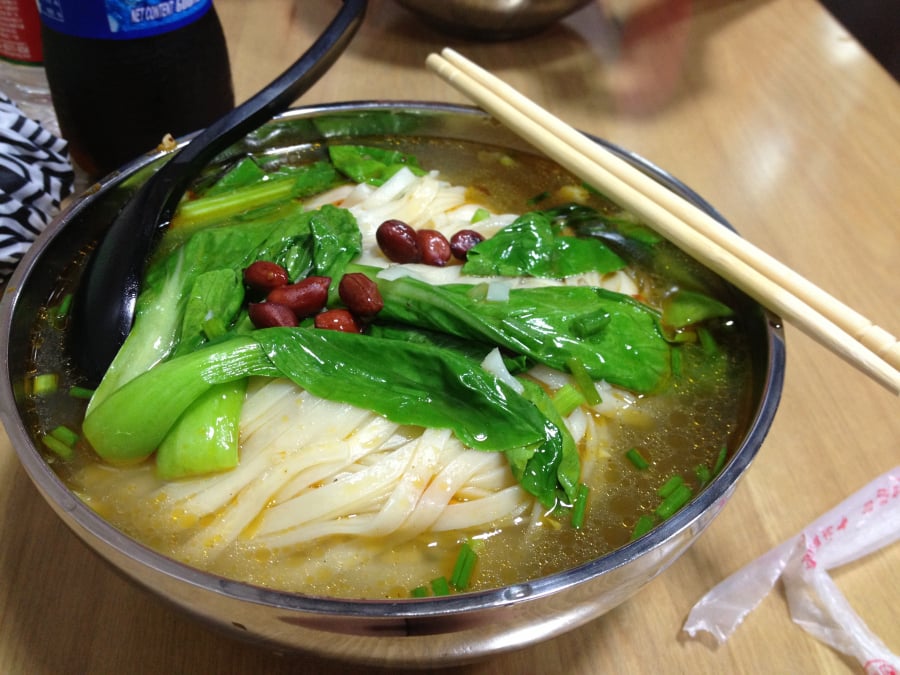
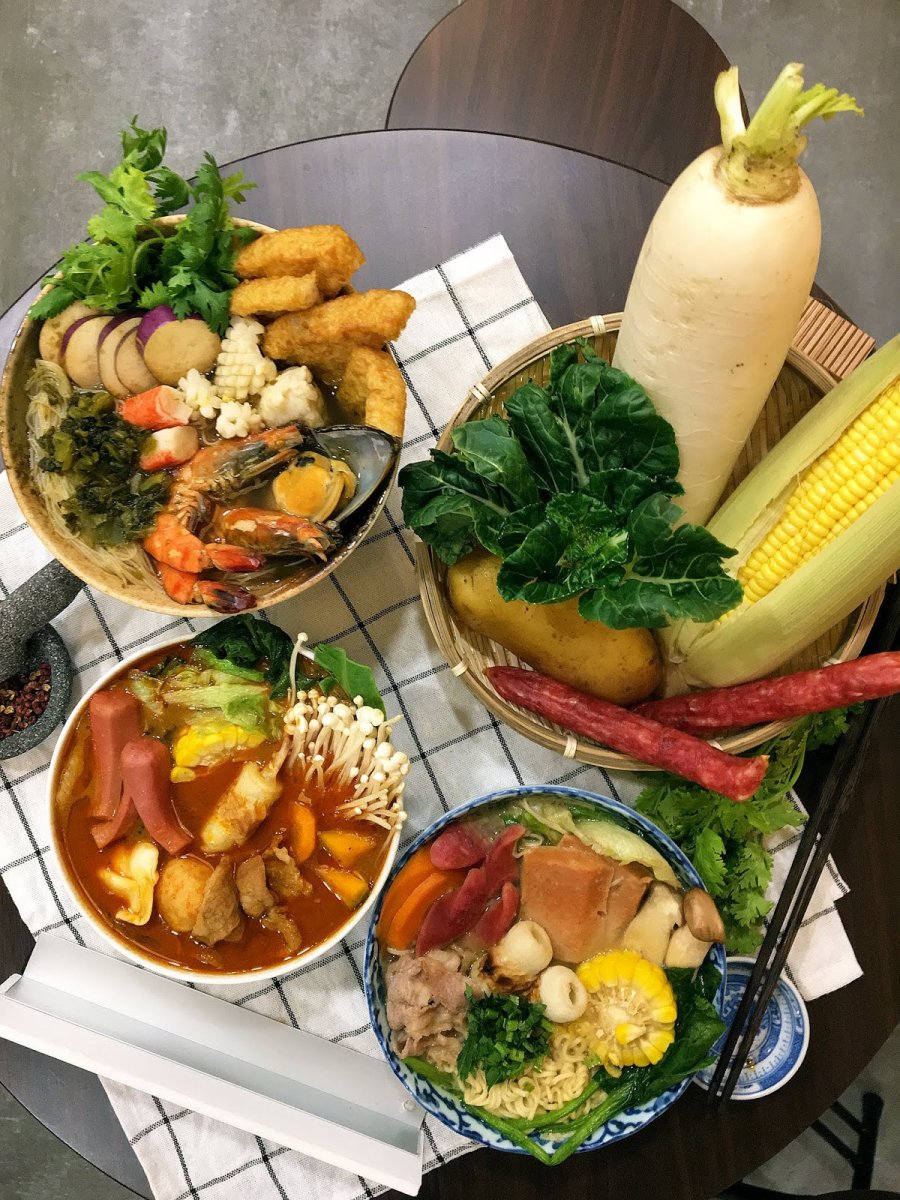
Unlike hot pot, malatang does not have a separate pot of broth for each table. Instead, diners will choose individual dishes on skewers with broth, then pass them to the server. The dishes will be cooked and served in a bowl to eat on the spot or take away.
Like a homemade salad, diners can customize everything about malatang, from the ingredients to the spices and the level of spiciness. The convenience and variety have helped malatang become increasingly popular and become one of the dishes you should try when visiting China. What could be better than enjoying a hot, fragrant bowl of malatang in the cold weather?





